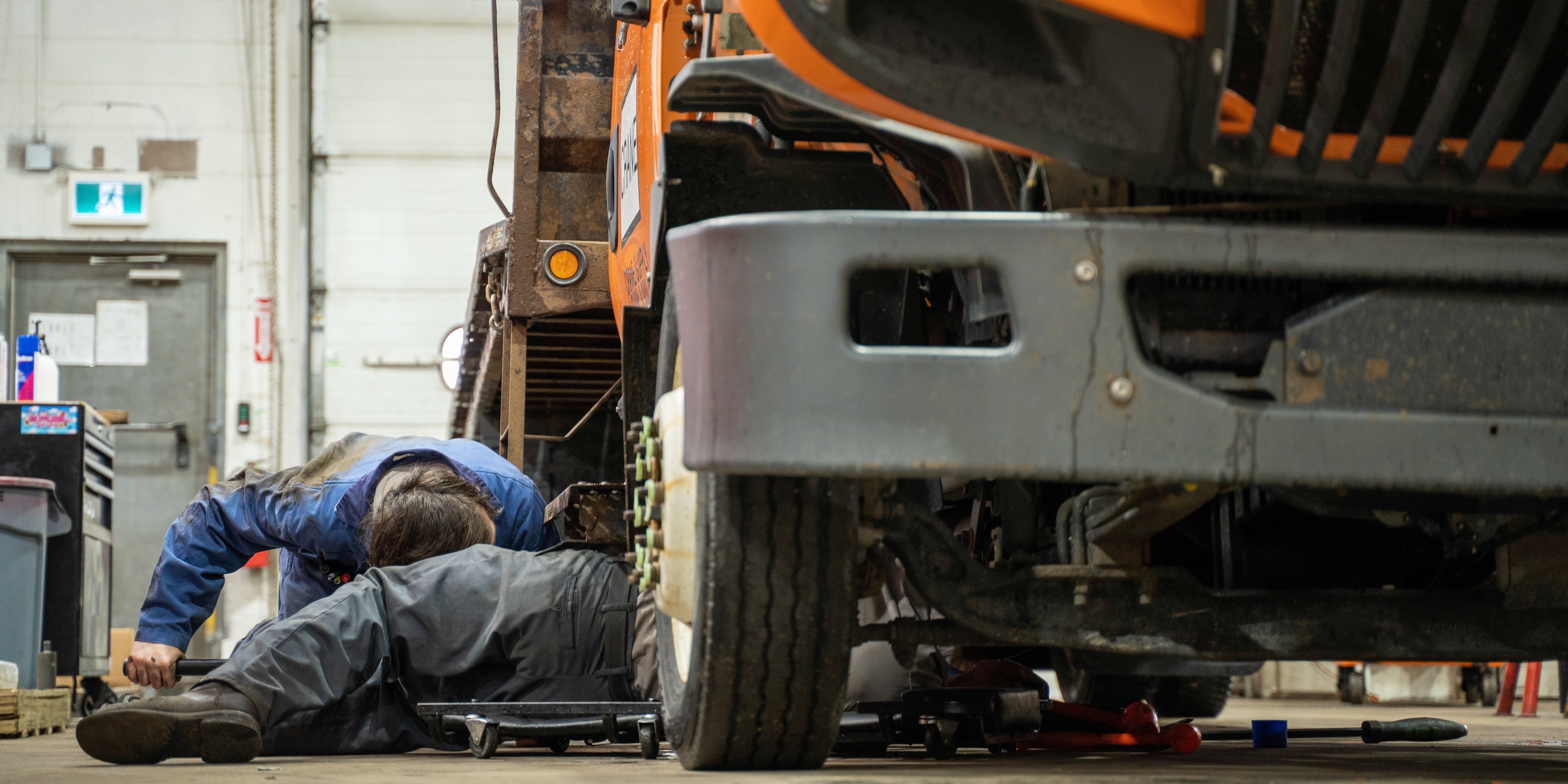
In the heavy-duty world, time is more than just money-it’s momentum, productivity, and reputation. Every hour a truck sits idle in your shop is an hour it’s not hauling freight, keeping schedules, or making your customer money. Downtime is expensive. Depending on the type of truck and the industry it's servicing, each day off the road can cost a fleet anywhere from $450 to $1,000+ per vehicle.
For shop owners and managers running independent or mid-sized operations, mastering fast turnaround isn’t a luxury-it’s a competitive edge that directly impacts your profitability and long-term success. In a landscape where demand is high, technician shortages persist, and fleets are under pressure to stay moving, the shops that streamline their repair cycle times will lead the pack.
This post will break down the true impact of turnaround times, why faster is better (for both you and your customers), and how to implement real strategies to tighten up your shop’s repair cycle and dominate your market.
Why Turnaround Time Is the #1 Competitive Differentiator
Let’s start with the numbers:
- Fleet downtime costs: Estimated between $448–$1,000 per vehicle per day depending on truck type and region.
- Average repair cycle: Industry data shows many shops average 7 to 12 days from work order open to final invoice.
- Initial delay: In some regions, it can take 2–3 days just to begin wrenching after drop-off.
That’s a lot of money left on the table-for your customers and your shop. In a business where uptime is everything, shops that can consistently turn trucks around faster become indispensable. Your customers don’t want coffee in the waiting room-they want their truck back yesterday.
The Payoff: How Fast Turnaround Drives Shop Revenue
Faster repairs don’t just make your customers happy. They unlock major financial benefits for your business:
- More jobs per bay: Cut cycle time from 10 days to 7, and you can fit 4–5 more jobs into the same month without adding staff or bays.
- Increased billed hours: Techs stay wrenching instead of waiting for approvals, parts, or paperwork.
- Higher customer retention: Fleets that know you turn work around quickly are far more likely to return-and recommend you to peers.
- Improved morale: Techs hate sitting idle. A fast, well-organized shop keeps them productive and engaged.
Take Inland Empire Fleet Maintenance, for example. After focusing on process efficiency, they saw a 50% revenue increase, just by completing jobs faster and capturing more work in the same time frame.
What Slows Shops Down – And How to Fix It
If your shop feels like it’s constantly behind or always has trucks waiting, you're not alone. Here are the most common repair bottlenecks that kill turnaround-and how to address them:
1. Waiting Days to Start a Job
Problem: Trucks drop off and sit for days before a wrench gets turned.
Fix:
- Implement triage inspections on Day 1 to prioritize jobs.
- Use a digital schedule to match incoming work to technician availability.
- Consider staggered shifts or an express bay to start quick jobs immediately.
2. Waiting on Parts
Problem: You diagnose the issue, but now the truck sits waiting for a part to arrive.
Fix:
- Keep a tight inventory of fast-moving, high-failure parts.
- Use automated inventory software to reorder when stock is low.
- Build strong local supplier relationships for fast fulfillment or same-day runs.
3. Slow Approvals
Problem: You’ve diagnosed the issue-but can’t move forward until the customer says "go."
Fix:
- Use digital estimates with email/text approvals.
- Set internal targets like “quote sent within 1 hour of diagnosis” and follow up with a systemized cadence.
- Communicate to customers that fast approval = fast repair.
4. Paperwork Lag
Problem: Work gets done, but invoicing or status updates don’t happen until later, delaying pickup and payment.
Fix:
- Go digital. Modern platforms like ShopView allow techs to clock in/out, log repairs, and close work orders in real time.
- Set a process: estimates sent within 1 hour, invoices within 24 hours of job completion.
5. Inefficient Shop Layout
Problem: Techs walk across the shop six times to get tools or find parts.
Fix:
- Organize work zones by service type.
- Store fast-moving tools and consumables close to the bays.
- Use tool shadow boards and carts to minimize downtime.
Fast Shops Win More Business – Here’s Why
Time is now one of the most valuable services you can offer. Fleet managers and owner-operators don’t care about fancy lobbies-they care about uptime. When you consistently reduce downtime, customers:
- Stick with you: Because they trust you to keep their business moving.
- Refer you: 88% of customers trust peer recommendations over advertising.
- Pay faster and return sooner: The relationship is stronger when you save them money.
One high-performing shop saw a 40% increase in net profit after streamlining cycle time with digital tools. Another cut admin work dramatically by going cloud-based, gaining $420K+ in savings per year.
ShopView: A Platform Built for Speed
ShopView (that’s us) is built from the ground up for heavy-duty repair efficiency. Independent shops using ShopView report:
Faster job starts
Real-time technician tracking
Parts integration to eliminate waiting
Automated digital approvals
Streamlined invoicing & payments
With all operations under one cloud-based dashboard, shops can move from diagnosis to finished invoice in hours-not days. Want to see what cutting turnaround time could look like in your shop? Get a demo.
Pro Tactics for Accelerating Turnaround
Beyond technology, here are 5 real-world tactics you can apply today to increase repair velocity:
1. Implement Express Service Bays
Reserve a bay for PMs and simple jobs (≤ 3 hours). Get trucks in and out same-day without clogging up bays with major rebuilds.
2. Pre-Schedule Preventative Maintenance
For fleet customers, schedule regular PMs during their lightest usage windows. You’ll pre-plan parts, reduce rush jobs, and minimize surprises.
3. Empower Techs with Tablets
Use mobile apps to allow clock-in/out, parts logging, and inspection forms at the bay-no trips back to the office.
4. Train Staff on Approval Expectations
Ensure advisors and writers understand: fast quotes and follow-ups are the gateway to fast repairs.
5. Track Your Turnaround Metrics
Use your software to monitor:
- Average time from work order open to close
- Time to first wrench
- Time from completed job to invoice
Set internal goals and reward your team for hitting them.
Set the Standard in Your Market
By tightening up your workflow and emphasizing turnaround as a core value, you’ll quickly differentiate yourself from other local shops. You’re not just repairing equipment-you’re saving customers thousands in downtime and keeping their businesses running.
Let that be the message in your marketing:
“Our turnaround times are 2–3 days faster than the industry average. Get your truck back, on time, every time.”
Highlight it in fleet sales pitches. Post real turnaround stats on your website. Feature customer testimonials that say, “We used to wait 7 days. Now it’s done in 3.”
Conclusion: The ROI of Speed Is Real
Fast turnaround is more than just hustle-it’s a smart, strategic way to increase revenue, retain customers, and run a more profitable shop. In an industry where uptime is king, making speed your competitive edge will future-proof your business.
Want to start turning jobs around faster-and more profitably?
👉 Book a ShopView demo today and see how shops just like yours are reducing cycle times, increasing revenue, and keeping their bays full.
.png?width=1500&height=1500&name=11%20(1).png)








.png?width=1500&height=1500&name=1%20(1).png)

%20-%20Copy.png?width=1500&height=1500&name=2%20(1)%20-%20Copy.png)



